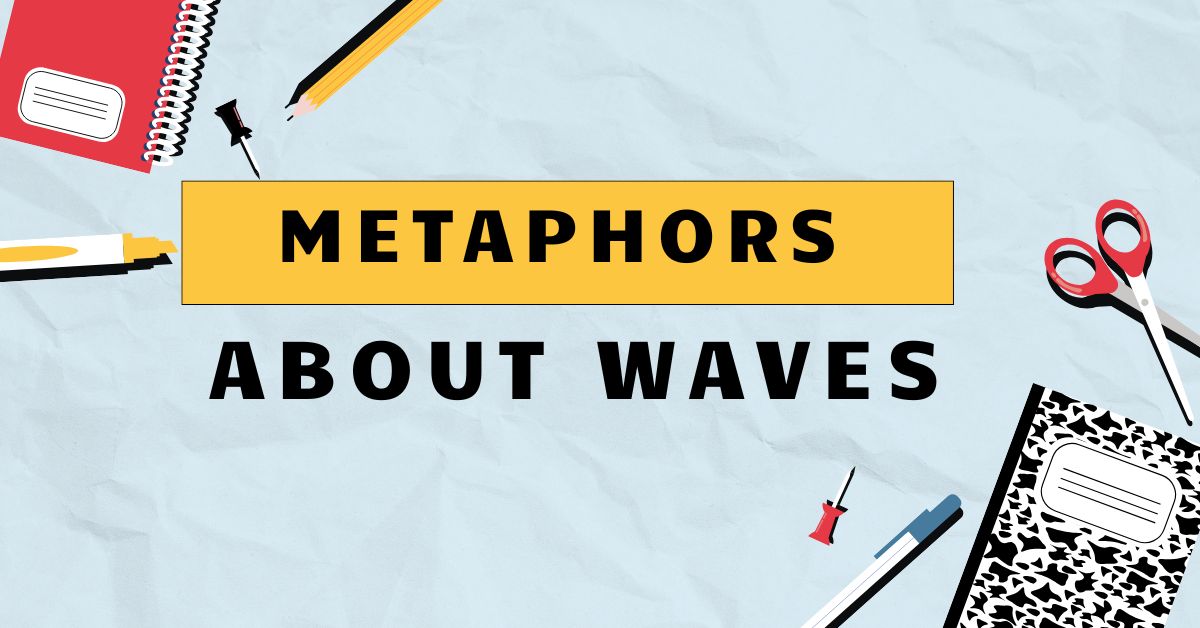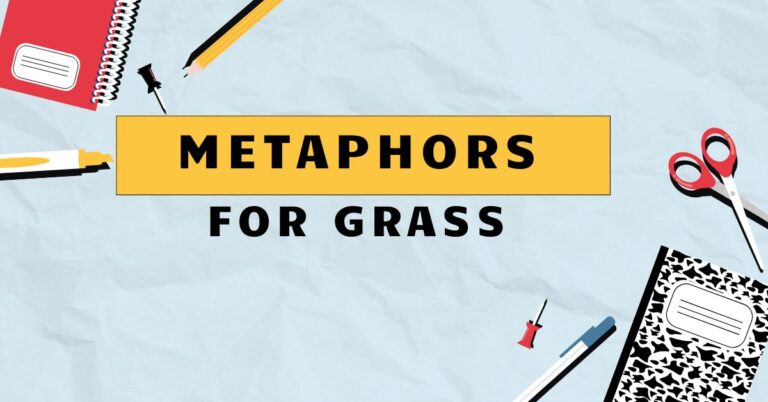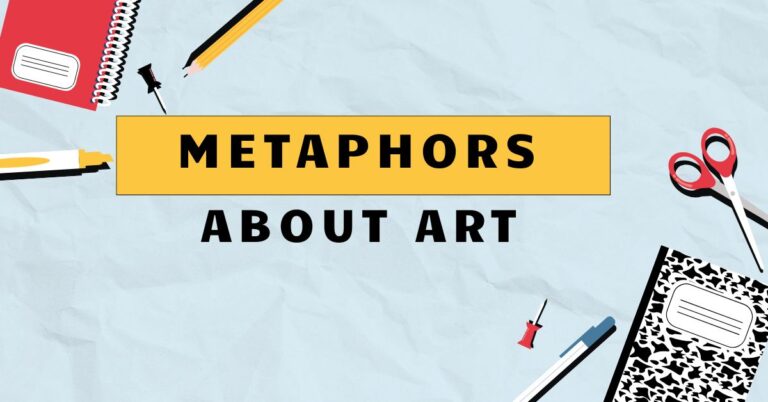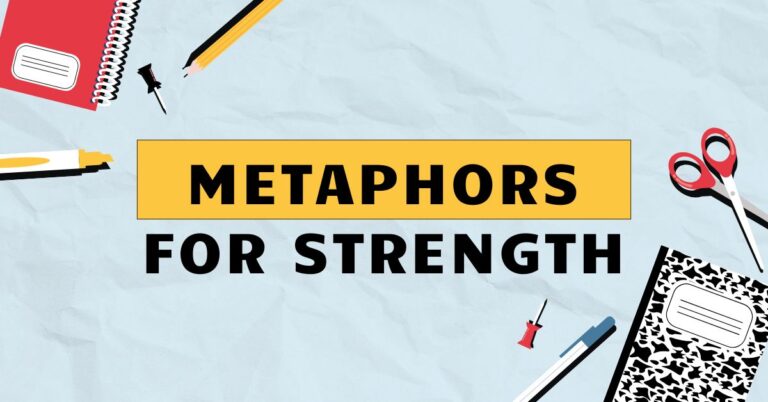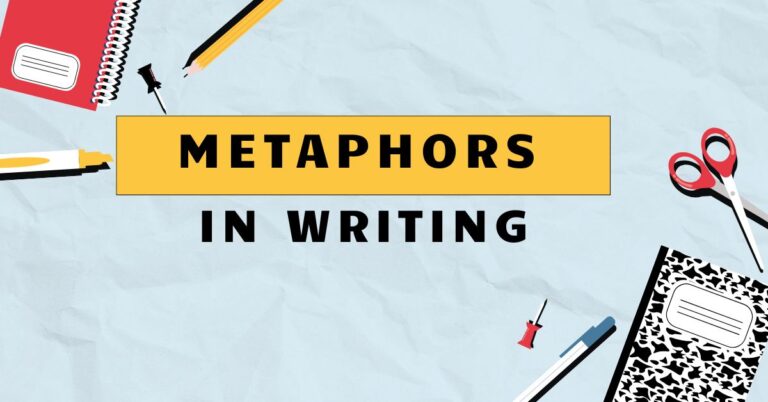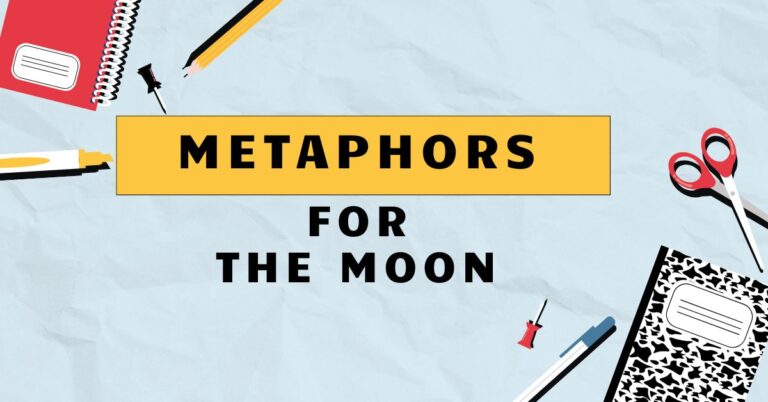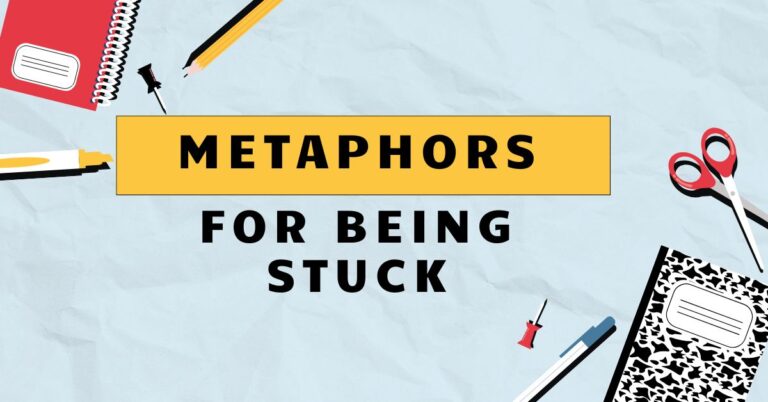47 Metaphors About Waves: Understanding Figurative Language
Metaphors comparing various aspects of life to waves are pervasive in English. Understanding these metaphors enhances comprehension of literature, poetry, and everyday conversation.
This article will explore the diverse ways waves are used metaphorically, their structural elements, and common usage rules. Students of English literature, ESL learners, and anyone interested in figurative language can benefit from this detailed guide.
By mastering these metaphors, readers can improve their interpretive skills and enrich their writing.
Table of Contents
- Introduction
- Definition of Metaphors About Waves
- Structural Breakdown
- Types and Categories
- Examples
- Usage Rules
- Common Mistakes
- Practice Exercises
- Advanced Topics
- FAQ
- Conclusion
Definition of Metaphors About Waves
A metaphor is a figure of speech that directly compares two unlike things without using “like” or “as.” Metaphors about waves draw parallels between the characteristics of ocean waves and other concepts, such as emotions, challenges, or societal trends. These metaphors leverage the dynamic and powerful imagery of waves to convey complex ideas in a vivid and relatable manner.
The effectiveness of wave metaphors lies in their ability to evoke a shared understanding of natural phenomena and apply it to abstract or intangible concepts. The use of wave metaphors allows speakers and writers to create a sense of depth and emotional resonance in their communication.
The function of wave metaphors is primarily to enhance understanding and create imagery. They allow us to perceive abstract ideas in more concrete terms.
For instance, describing someone’s anger as “a wave of fury” brings the abstract concept of anger to life by associating it with the physical power and movement of a wave. The context in which these metaphors are used is crucial; the specific characteristics of a wave (e.g., its size, speed, or force) can be chosen to match the nuances of the concept being described.
Understanding the underlying analogy is key to interpreting the intended meaning.
Structural Breakdown
The structure of a wave metaphor typically involves two main components: thetenorand thevehicle. The tenor is the subject being described (e.g., an emotion, a situation), while the vehicle is the wave itself.
The metaphor works by transferring qualities associated with the vehicle (the wave) to the tenor (the subject). The effectiveness of the metaphor depends on the strength and clarity of the connection between these two components.
A well-constructed wave metaphor highlights relevant similarities between the wave and the subject, creating a meaningful association in the reader’s or listener’s mind. The implicit comparison adds depth and nuance to the description.
For example, in the phrase “a wave of nostalgia,” ‘nostalgia’ is the tenor, and ‘wave’ is the vehicle. The metaphor suggests that nostalgia, like a wave, can suddenly rise, engulf a person, and then recede.
The structural pattern is often simple: “[Tenor] is a [wave-related term].” However, the complexity can increase with extended metaphors, where the wave analogy is developed further with additional details and related imagery. Understanding this basic structure is fundamental to both interpreting and creating effective wave metaphors.
Analyzing the relationship between the tenor and the vehicle helps to uncover the intended meaning and appreciate the artistry of the figurative language.
Types and Categories
Metaphors about waves can be categorized based on the concepts they are used to describe. The following subsections will explore some common categories, providing a framework for understanding the varied applications of these metaphors.
Recognizing these categories helps in interpreting the intended meaning and appreciating the versatility of wave metaphors in English.
Emotional States
Waves are frequently used to describe emotional states, capturing the intensity, fluidity, and transient nature of feelings. These metaphors often convey the idea that emotions can rise and fall like waves, sometimes overwhelming us and sometimes gently washing over us.
The size and power of the wave can reflect the strength of the emotion being described. Understanding this category allows us to better appreciate how language can capture the complex and often unpredictable nature of human emotions.
Life’s Challenges and Obstacles
Life’s challenges and obstacles are commonly described using wave metaphors. These metaphors often portray challenges as powerful waves that must be navigated or overcome.
They can also suggest that life, like the ocean, is full of both calm and turbulent periods. The ability to “ride the wave” of a challenge implies resilience and adaptability.
Understanding this category provides insight into how we conceptualize and cope with adversity.
Social and Political Movements
Social and political movements are often depicted as waves, reflecting their momentum, spread, and impact on society. These metaphors can convey the idea that movements build gradually, reach a peak, and then sometimes subside.
The “wave” can represent a surge of public opinion, a shift in cultural norms, or a period of significant social change. Analyzing these metaphors helps us understand how language shapes our perception of societal trends and transformations.
Time and Change
The passage of time and the inevitability of change are frequently expressed through wave metaphors. These metaphors emphasize the continuous and cyclical nature of time, suggesting that, like waves, time is always moving forward, bringing new experiences and eventually receding into the past.
The ebb and flow of the tide often serves as a metaphor for the cycles of life and the constant process of change. Understanding this category helps us appreciate the philosophical and reflective uses of wave metaphors.
Intellectual and Creative Pursuits
Intellectual and creative pursuits can also be described using wave metaphors. These metaphors often relate to a surge of inspiration, a breakthrough in understanding, or the culmination of creative effort.
The idea of “riding the wave” of inspiration suggests harnessing one’s creative energy and allowing it to carry one forward. These metaphors highlight the dynamic and often unpredictable nature of intellectual and artistic endeavors.
Examples
This section provides extensive examples of wave metaphors categorized by their usage, demonstrating the breadth and depth of their application in the English language. Each category will be illustrated with numerous examples in table format to enhance clarity and understanding.
Emotional States Examples
The following table provides examples of wave metaphors used to describe various emotional states. Notice how the characteristics of the wave (e.g., size, speed, force) reflect the intensity and nature of the emotion.
| Metaphor | Explanation |
|---|---|
| A wave of sadness washed over her. | She experienced a sudden and overwhelming feeling of sadness. |
| He was hit by a wave of grief. | He felt a strong and sudden sense of grief. |
| A wave of anger surged through him. | He experienced a sudden and intense feeling of anger. |
| She felt a wave of joy. | She experienced a sudden feeling of happiness. |
| A wave of panic washed over the crowd. | The crowd experienced a sudden and widespread feeling of panic. |
| He succumbed to a wave of despair. | He was overwhelmed by a feeling of hopelessness. |
| A wave of nostalgia swept over her as she looked at the old photos. | She felt a strong longing for the past. |
| The news sent a wave of shock through the community. | The news caused widespread disbelief and distress. |
| There was a wave of relief when the missing child was found. | Everyone felt a strong sense of relief. |
| A wave of disappointment crashed over him when he didn’t get the job. | He felt extremely disappointed. |
| A wave of fear gripped her as she walked alone at night. | She felt a sudden and intense fear. |
| He was caught in a wave of self-pity. | He was feeling sorry for himself. |
| A wave of excitement ran through the children as they opened their presents. | The children were very excited. |
| She rode a wave of confidence after her successful presentation. | She felt very confident. |
| A wave of embarrassment washed over him when he tripped on stage. | He felt very embarrassed. |
| The team rode a wave of momentum to win the championship. | The team had strong momentum to win. |
| A wave of support poured in after the announcement. | There was a lot of support after the announcement. |
| He felt a wave of gratitude for his friend’s help. | He was grateful for his friend’s help. |
| A wave of loneliness overcame her after her family moved away. | She felt very lonely. |
| She was buoyed by a wave of optimism despite the challenges. | She was optimistic despite the challenges. |
| A wave of anticipation built as the concert neared. | The anticipation was high. |
| He suppressed a wave of annoyance at the interruption. | He was annoyed at the interruption. |
| A wave of guilt weighed on her after the argument. | She felt guilty after the argument. |
| The athlete harnessed a wave of adrenaline to finish the race. | The athlete was full of adrenaline to finish the race. |
| A wave of tenderness filled her as she held the baby. | She felt tenderness as she held the baby. |
| He was swept away by a wave of passion. | He was full of passion. |
| A wave of skepticism greeted the politician’s promises. | There was skepticism about the politician’s promises. |
| She rode a wave of inspiration to complete her novel. | She was inspired to complete her novel. |
Life’s Challenges Examples
This table illustrates how wave metaphors are used to describe life’s challenges and obstacles. The metaphors often convey the idea of overcoming or being overwhelmed by difficulties.
| Metaphor | Explanation |
|---|---|
| He was struggling against a wave of adversity. | He was facing many difficult challenges. |
| She weathered the wave of criticism. | She successfully dealt with a period of criticism. |
| The company is riding a wave of success. | The company is currently very successful. |
| He had to navigate a wave of bureaucratic red tape. | He had to deal with a lot of complicated bureaucracy. |
| The project faced a wave of setbacks. | The project encountered many problems. |
| They were caught in a wave of economic downturn. | They were experiencing the effects of an economic recession. |
| She managed to stay afloat despite the wave of challenges. | She managed to survive despite the difficulties. |
| The business was swamped by a wave of competition. | The business was overwhelmed by competitors. |
| He tried to ride the wave of change. | He tried to adapt to the changes. |
| The community was hit by a wave of crime. | The community experienced a sudden increase in crime. |
| She faced a wave of health problems. | She experienced many health issues. |
| The team overcame a wave of injuries. | The team managed to succeed despite many injuries. |
| The city was bracing for a wave of protests. | The city was preparing for widespread protests. |
| He was drowning in a wave of debt. | He was overwhelmed by debt. |
| The company was struggling to stay ahead of the wave of innovation. | The company was struggling to keep up with the latest innovations. |
| She was swept away by a wave of responsibilities. | She was overwhelmed by her responsibilities. |
| The project was derailed by a wave of unforeseen circumstances. | The project was stopped by unexpected problems. |
| He was caught in the undertow of addiction. | He was struggling with addiction. |
| The country was grappling with a wave of political unrest. | The country was experiencing political instability. |
| She was trying to navigate the waves of adolescence. | She was trying to deal with the challenges of being a teenager. |
| He was riding the wave of his career success. | He was enjoying his career success. |
| The family was recovering from a wave of financial hardship. | The family was recovering from financial difficulties. |
| She was battered by a wave of personal attacks. | She was the subject of many personal attacks. |
| He was trying to stay above the wave of negativity. | He was trying to avoid negative influences. |
| The company weathered the storm of the economic crisis. | The company had overcome the economic crisis. |
| She was swept up in the wave of enthusiasm for the new project. | She was enthusiastic about the new project. |
| He was trying to stem the tide of misinformation. | He was trying to stop the spread of misinformation. |
| The government was struggling to control the wave of immigration. | The government was struggling to manage immigration. |
Social Movements Examples
This table presents examples of wave metaphors used to describe social and political movements. These metaphors often emphasize the growth, momentum, and impact of these movements.
| Metaphor | Explanation |
|---|---|
| A wave of feminism swept across the country. | Feminist ideas and activism became widespread. |
| The civil rights movement gained a wave of momentum. | The civil rights movement became stronger and more influential. |
| There was a wave of support for the environmental movement. | Many people supported the environmental movement. |
| A wave of populism is rising in many countries. | Populist political movements are becoming more popular. |
| The anti-war movement generated a wave of protest. | The anti-war movement led to many protests. |
| A wave of nationalism is spreading throughout the region. | Nationalist sentiments are becoming more prevalent in the region. |
| The LGBTQ+ rights movement is riding a wave of progress. | The LGBTQ+ rights movement is making significant advancements. |
| A wave of social reform is needed to address inequality. | Significant social reforms are needed to reduce inequality. |
| The movement started as a ripple but became a wave. | The movement started small but grew to be very large and influential. |
| The wave of public opinion turned against the government. | Public opinion shifted negatively towards the government. |
| A wave of strikes paralyzed the country. | Strikes caused widespread disruption throughout the country. |
| The protests created a wave of awareness about the issue. | The protests made more people aware of the issue. |
| A wave of activism is sweeping across college campuses. | Activism is becoming more common on college campuses. |
| The movement is trying to ride the wave of technological change. | The movement is trying to use technology to further its goals. |
| A wave of discontent is growing among the working class. | The working class is becoming increasingly dissatisfied. |
| The movement is building a wave of grassroots support. | The movement is gaining support from ordinary people. |
| A wave of democratic reform is spreading across the region. | Democratic reforms are becoming more common in the region. |
| The protests sparked a wave of solidarity around the world. | The protests led to widespread expressions of solidarity. |
| A wave of conservatism is influencing political discourse. | Conservative ideas are becoming more influential in political discussions. |
| The movement is trying to harness the power of social media to create a wave of change. | The movement is trying to use social media to bring about change. |
| A wave of innovation is transforming the industry. | Innovation is leading to significant changes in the industry. |
| The movement is facing a wave of opposition from powerful interests. | The movement is facing strong resistance from influential groups. |
| The government is trying to stem the tide of illegal immigration. | The government is trying to stop illegal immigration. |
| A wave of economic liberalization is sweeping across the country. | Economic liberalization is becoming more common in the country. |
| The movement is riding the wave of popular discontent. | The movement is benefiting from widespread dissatisfaction. |
| A wave of protectionism is threatening global trade. | Protectionist policies are posing a risk to global trade. |
| The movement is trying to create a wave of awareness about climate change. | The movement is trying to make more people aware of climate change. |
Time and Change Examples
This table provides examples of wave metaphors used to describe the passage of time and the process of change. They often convey the cyclical and continuous nature of time.
| Metaphor | Explanation |
|---|---|
| The waves of time continue to erode the coastline. | Time is gradually changing the coastline. |
| He felt the waves of memory washing over him. | He was experiencing a flood of memories. |
| The tide of history is turning. | Significant changes are happening in history. |
| The ebb and flow of life continues. | Life has its ups and downs. |
| The waves of change are inevitable. | Change is unavoidable. |
| He was caught in the currents of time. | He was being influenced by the passage of time. |
| The waves of progress are reshaping society. | Progress is leading to significant changes in society. |
| The tide of fashion is constantly changing. | Fashion trends are always changing. |
| We are riding the wave of the future. | We are experiencing the changes of the future. |
| The waves of innovation are transforming the industry. | Innovation is leading to significant changes in the industry. |
| The sands of time are running out. | Time is passing quickly. |
| He felt the weight of the years like a relentless tide. | He felt the burden of aging. |
| The waves of immigration have shaped the nation’s culture. | Immigration has influenced the nation’s culture. |
| The tide of opinion is shifting. | Public opinion is changing. |
| He was swimming against the tide of popular opinion. | He was disagreeing with popular opinion. |
| The rising tide lifts all boats. | Economic prosperity benefits everyone. |
| She felt the pull of the past like a strong undertow. | She felt strongly influenced by her past. |
| The waves of globalization are connecting the world. | Globalization is increasing interconnectedness around the world. |
| He was caught in the maelstrom of historical events. | He was swept up by major historical events. |
| The waves of technological advancement are accelerating. | Technological advancements are happening at an increasing pace. |
| He felt like a castaway adrift on the sea of time. | He felt lost and isolated in time. |
| The waves of economic change are creating new opportunities. | Economic changes are leading to new opportunities. |
| She was swept away by the tide of history. | She was influenced by historical events. |
| The waves of cultural exchange are enriching society. | Cultural exchange is making society more diverse and vibrant. |
| He was trying to navigate the turbulent waters of the changing economy. | He was trying to deal with the difficulties of the changing economy. |
| The waves of information are crashing over us. | We are being overwhelmed with information. |
Intellectual and Creative Pursuits Examples
This table shows examples of wave metaphors used to describe intellectual and creative pursuits. These metaphors often relate to inspiration, breakthroughs, and the culmination of effort.
| Metaphor | Explanation |
|---|---|
| He had a wave of inspiration. | He suddenly had a creative idea. |
| She rode the wave of creativity. | She was experiencing a period of high creativity. |
| He was swept away by a wave of ideas. | He was overwhelmed by many new ideas. |
| The project was riding a wave of momentum. | The project was progressing rapidly and successfully. |
| He felt a surge of intellectual curiosity. | He experienced a strong desire to learn. |
| She channeled her emotions into a wave of artistic expression. | She expressed her emotions through her art. |
| The author created a wave of excitement with her new book. | The author’s new book generated a lot of excitement. |
| He was surfing the wave of knowledge. | He was learning and exploring new ideas. |
| The scientist made a wave of groundbreaking discoveries. | The scientist made many important new discoveries. |
| She was caught up in a wave of intellectual debate. | She was actively participating in intellectual discussions. |
| He was trying to capture the wave of inspiration before it crashed. | He was trying to write down his ideas before he forgot them. |
| The artist poured her soul into a wave of creative energy. | The artist put a lot of passion and effort into her creative work. |
| He was riding the crest of his intellectual achievements. | He was at the peak of his intellectual success. |
| She was swept away by the beauty of the music. | She was moved by the beauty of the music. |
| The play created a wave of emotion in the audience. | The play evoked strong emotions in the audience. |
| He was trying to stem the tide of misinformation with his research. | He was trying to counter the spread of misinformation with his research. |
| She was caught in the undertow of self-doubt, hindering her creative process. | She was struggling with self-doubt, which was affecting her creativity. |
| The new theory sent ripples through the scientific community. | The new theory had a significant impact on the scientific community. |
| He felt a wave of clarity wash over him as he understood the concept. | He suddenly understood the concept clearly. |
| The lecture sparked a wave of intellectual curiosity among the students. | The lecture made the students more curious to learn. |
| He was caught in the vortex of his own genius. | He was deeply immersed in his own intellectual pursuits. |
| The book sent waves of influence throughout the literary world. | The book had a significant impact on the literary world. |
| She rode a wave of critical acclaim after the release of her film. | She received a lot of positive reviews for her film. |
| He was trying to navigate the sea of information to find the truth. | He was searching through a lot of information to find the truth. |
| The debate created a ripple effect of intellectual inquiry. | The debate led to further intellectual exploration. |
| He was swept away by a torrent of inspiration. | He was overwhelmed by a surge of inspiration. |
Usage Rules
When using wave metaphors, it’s important to ensure that the comparison is logical and meaningful. The characteristics of the wave should align with the qualities of the concept being described.
Overusing wave metaphors can make your writing or speech sound cliché, so it’s important to use them judiciously. Consider the context and audience when choosing a wave metaphor to ensure that it resonates effectively.
A well-chosen wave metaphor can add depth and vividness to your communication, but a poorly chosen one can be confusing or distracting.
Specificity is key. Avoid vague or generic wave metaphors that don’t create a clear image.
Instead, focus on choosing metaphors that highlight specific aspects of waves, such as their size, speed, force, or cyclical nature. For example, instead of saying “He was going through a difficult time,” consider saying “He was battling a relentless tide of challenges.” The latter provides a more vivid and impactful description.
Also, be mindful of mixed metaphors, where the comparison becomes illogical or contradictory. Maintaining consistency in your imagery is crucial for creating a coherent and effective message.
Common Mistakes
One common mistake is using wave metaphors in a clichéd or predictable way. For example, saying “a wave of emotion” is overused and lacks impact.
Instead, try to find more original and specific ways to describe emotions using wave imagery. Avoid mixing metaphors.
For example, “The wave of change is a double-edged sword” mixes two different metaphors, creating a confusing image. Another mistake is using wave metaphors inappropriately.
Ensure the wave-related imagery aligns with the concept being described. For instance, describing a slow, gradual process as a “sudden wave” is inaccurate and misleading.
The table below shows common mistakes when using wave metaphors, along with the corrected versions:
| Incorrect | Correct | Explanation |
|---|---|---|
| He felt a wave of feeling. | He felt a wave of grief. | “Feeling” is too vague. “Grief” provides a specific emotion. |
| The wave of change is a double-edged sword. | The wave of change brought both opportunities and challenges. | Mixing metaphors creates a confusing image. |
| A sudden wave of progress occurred over many years. | A gradual tide of progress occurred over many years. | “Sudden wave” contradicts the gradual process of many years. |
| The wave of success was a slippery slope. | The wave of success led to complacency. | “Slippery slope” is a separate metaphor that doesn’t fit. |
| She was hit by a tidal wave of minor inconveniences. | She was bothered by a series of minor inconveniences. | “Tidal wave” implies overwhelming force, which doesn’t fit minor inconveniences. |
Practice Exercises
Test your understanding of wave metaphors with these practice exercises. Each exercise will help you identify and interpret different types of wave metaphors in various contexts.
Exercise 1: Identify the Metaphor
Identify the wave metaphor in each sentence and explain what it means.
| Question | Answer |
|---|---|
| 1. A wave of nostalgia washed over him as he revisited his childhood home. | The wave of nostalgia: A sudden and overwhelming feeling of longing for the past. |
| 2. The company is riding a wave of innovation with its new products. | Riding a wave of innovation: Experiencing a period of rapid and successful innovation. |
| 3. The protests sparked a wave of solidarity around the world. | A wave of solidarity: A widespread expression of support and unity. |
| 4. He was caught in the undertow of addiction. | The undertow of addiction: The strong and destructive pull of addiction. |
| 5. The tide of public opinion turned against the government. | The tide of public opinion: A shift in the prevailing sentiment of the public. |
| 6. She had a wave of inspiration, writing three songs in one night. | Wave of inspiration: A sudden burst of creative ideas. |
| 7. The team weathered the wave of criticism after the loss. | Wave of criticism: A period of intense and negative feedback. |
| 8. He felt a wave of fear grip him when he saw the dark alley. | Wave of fear: A sudden and intense feeling of fear. |
| 9. The country is facing a wave of economic challenges. | Wave of economic challenges: A series of difficult economic problems. |
| 10. The movement is trying to ride the wave of social change. | Ride the wave of social change: To take advantage of current social trends. |
Exercise 2: Fill in the Blank
Complete each sentence with an appropriate wave metaphor.
| Question | Answer |
|---|---|
| 1. After winning the championship, the team was riding a __________. | wave of success |
| 2. The news of the disaster sent a __________ through the community. | wave of shock |
| 3. Despite the setbacks, the project continued to move forward on a __________. | wave of momentum |
| 4. The artist poured her emotions into a __________ of creative expression. | wave |
| 5. The new policy faced a __________ of opposition from various groups. | wave |
| 6. As she looked through old photos, a __________ of memories washed over her. | wave |
| 7. The government is trying to stem the __________ of illegal immigration. | tide |
| 8. The protests sparked a __________ of awareness about the issue. | wave |
| 9. The company is trying to
wave of innovation. |
ride the |
| 10. He felt a __________ of gratitude for all the support he received. | wave |
Exercise 3: Create Your Own Metaphor
Create your own wave metaphor to describe each of the following situations.
| Situation | Your Metaphor |
|---|---|
| 1. A sudden increase in the number of students applying to a university. | A surge of applications flooded the university admissions office. |
| 2. The feeling of excitement before a major event. | A wave of anticipation built as the concert neared. |
| 3. Overcoming a significant personal challenge. | She weathered the wave of personal challenges and emerged stronger. |
| 4. The spread of a new trend or fashion. | A wave of new fashion swept across the city’s youth. |
| 5. A period of intense creativity and productivity. | He rode a wave of creativity, completing several paintings in a few weeks. |
| 6. The feeling of being overwhelmed by responsibilities. | She was drowning in a wave of responsibilities, struggling to stay afloat. |
| 7. A sudden realization or understanding. | A wave of clarity washed over him as he finally understood the complex concept. |
| 8. The growing support for a political candidate. | A wave of support propelled the political candidate to victory. |
| 9. Dealing with constant interruptions at work. | He was constantly bombarded by waves of interruptions throughout the workday. |
| 10. A feeling of deep sadness after a loss. | A wave of sorrow enveloped her after hearing the news. |
Advanced Topics
For advanced learners, exploring the cultural and historical contexts of wave metaphors can provide deeper insights. Different cultures may interpret and use wave metaphors in unique ways, reflecting their relationship with the ocean and their cultural values.
Also, consider the use of extended wave metaphors in literature, where the wave imagery is developed throughout the text to convey complex themes and ideas. Analyzing these extended metaphors can enhance your understanding of literary analysis and interpretation.
Examining how authors like Virginia Woolf or Herman Melville use wave imagery can offer a nuanced perspective on this topic.
Another advanced topic is the intersection of wave metaphors with other types of figurative language, such as similes and personification. Understanding how these different figures of speech interact can help you create more sophisticated and impactful writing.
For example, you might combine a wave metaphor with personification to describe the ocean as “a relentless wave of time, constantly eroding the shores of memory.” Exploring these advanced techniques can elevate your understanding and use of figurative language to a higher level. Studying literary criticism and rhetorical theory can provide valuable tools for analyzing and appreciating these complex linguistic devices.
FAQ
Conclusion
Metaphors about waves offer a powerful tool for enhancing communication and understanding. By drawing parallels between the dynamic nature of waves and various aspects of life, these metaphors provide vivid and relatable ways to express complex ideas.
Whether describing emotional states, life’s challenges, social movements, or the passage of time, wave metaphors add depth and resonance to our language. Mastering the usage rules and avoiding common mistakes will enable you to use these metaphors effectively in your writing and speech.
As you continue to explore and practice, you’ll discover the versatility and artistry of wave metaphors, enriching your interpretive skills and creative expression.

